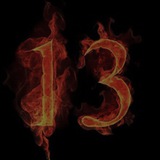#quote #Sun #belief #Hogfather #TerryPratchett
“Thank you. Now . . . tell me . . .”
WHAT WOULD HAVE HAPPENED IF YOU HADN”T SAVED HIM?
“Yes! The sun would have risen just the same, yes?”
NO.
“Oh, come on. You can’t expect me to believe that. It’s an astronomical fact.”
THE SUN WOULD NOT HAVE RISEN.
She turned on him.
“It’s been a long night, Grandfather! I’m tired and I need a bath! I don’t need silliness!”
THE SUN WOULD NOT HAVE RISEN.
“Really? Then what would have happened, pray?”
A MERE BALL OF FLAMING GAS WOULD HAVE ILLUMINATED THE WORLD.
They walked in silence for a moment.
https://pbs.twimg.com/media/DR1vh0RV4AAvQje.jpg
“Thank you. Now . . . tell me . . .”
WHAT WOULD HAVE HAPPENED IF YOU HADN”T SAVED HIM?
“Yes! The sun would have risen just the same, yes?”
NO.
“Oh, come on. You can’t expect me to believe that. It’s an astronomical fact.”
THE SUN WOULD NOT HAVE RISEN.
She turned on him.
“It’s been a long night, Grandfather! I’m tired and I need a bath! I don’t need silliness!”
THE SUN WOULD NOT HAVE RISEN.
“Really? Then what would have happened, pray?”
A MERE BALL OF FLAMING GAS WOULD HAVE ILLUMINATED THE WORLD.
They walked in silence for a moment.
https://pbs.twimg.com/media/DR1vh0RV4AAvQje.jpg
#conspiracy #belief #magic
Why do people find conspiracy theories attractive, convincing, or useful? In this article, I analyze conspirituality—that is, the relationships between New Age spirituality and conspiracy theories—in Italy during the COVID-19 lockdown. After distinguishing between conspiracy-believing and belief in conspiracies, I claim that conspiracy-believing could be understood as an aesthetic (sensory and artistic) practice. In doing so, I offer a novel interpretation on conspiracism that complements current scholarship while departing from the latter’s focus on the cognitive and emotional weaknesses of those who adopt conspiracy theories. By engaging with the thought of Jacques Rancière, in conversation with studies on contemporary Paganism and Western esotericism, I consider the adoption of conspiracy theories as an expression of dissensus by a community of sense that does not look only for visibility but, rather, wants to be fully acknowledged, recognized, and legitimized in their “participatory”—or “magical”—way of inhabiting the world.
https://academic.oup.com/jaar/article/89/2/506/6299191
Why do people find conspiracy theories attractive, convincing, or useful? In this article, I analyze conspirituality—that is, the relationships between New Age spirituality and conspiracy theories—in Italy during the COVID-19 lockdown. After distinguishing between conspiracy-believing and belief in conspiracies, I claim that conspiracy-believing could be understood as an aesthetic (sensory and artistic) practice. In doing so, I offer a novel interpretation on conspiracism that complements current scholarship while departing from the latter’s focus on the cognitive and emotional weaknesses of those who adopt conspiracy theories. By engaging with the thought of Jacques Rancière, in conversation with studies on contemporary Paganism and Western esotericism, I consider the adoption of conspiracy theories as an expression of dissensus by a community of sense that does not look only for visibility but, rather, wants to be fully acknowledged, recognized, and legitimized in their “participatory”—or “magical”—way of inhabiting the world.
https://academic.oup.com/jaar/article/89/2/506/6299191
OUP Academic
Magic and Politics: Conspirituality and COVID-19
Abstract. Why do people find conspiracy theories attractive, convincing, or useful? In this article, I analyze conspirituality—that is, the relationships betwee
